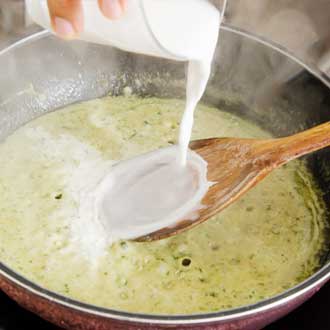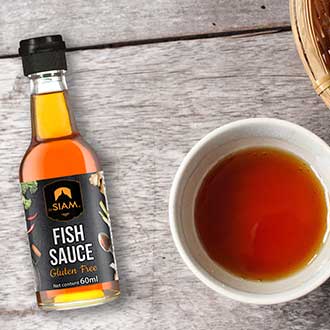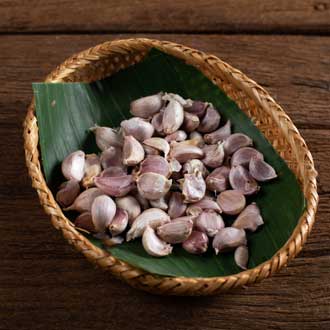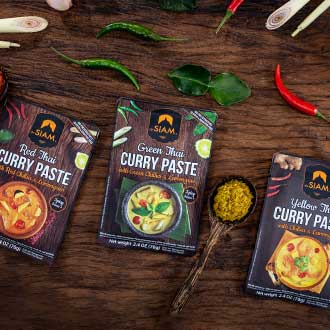My shopping cart
Your cart is currently empty.
Continue Shopping
Cooking Thai food is not at all difficult but mastering and achieving the authentic Thai taste may require more practice and some extra knowledge. Here are some tips and techniques that can help you cook better Thai food.

Coconut milk is a staple in many traditional Thai dishes, mainly in curries, but it is also a good base cooking liquid for some soups like Tom Kha Gai (Thai Coconut Chicken Soup) or sometime Tom Yum as well. The coconut milk is different from the coconut juice. The juice is the clear, sweet, refreshing water you find inside a young green coconut and normally served as a drink. However, coconut milk is extracted from finely grated, mature, coconut flesh. Only mature coconut flesh can be used as it is squeezed into a rich milk. Coconut milk is thicker than regular dairy milk or cream, unsweetened and tempers spicy things and that is why it is commonly used for curries.
Traditionally, Thais prepares coconut milk by adding a little hot water into grated coconut flesh, then knead and squeeze it through a sieve lined with muslin cloth. The first squeeze is usually called ‘the head’ of coconut milk (or coconut cream) which is thick like a cream and contains the most flavor and scent. In traditional Thai cooking, the first squeeze of the coconut milk is used in curry dishes when first heating the curry to bring out the taste and aroma. Keep adding water and repeat the process of kneading and squeezing it again, then you will get the ‘body’ of coconut milk which is weaker and usually used to bring the curry to the right consistency.
Many Thai cooks still prefer to use freshly squeezed coconut milk because it gives a better taste. However, if you cannot make it, use a coconut milk in a can or box as it still gives you a more authentic flavor than using dairy products or creams. However, most of the time you probably can find ‘coconut milk (body)’ but not a cream one which is totally fine, and it can be used for cooking with the same method. But if you want to achieve the similar effect of using the coconut cream, we will give you a simple and easy tip -- you can use a bit of vegetable oil to fry the curry paste when first heating it with the meat then add a little coconut milk to ease the frying and continue with the recipe.
Thai people also use coconut milk in many traditional desserts like Khao Niao Mamuang (Mango Sticky Rice), Bua Loy (Rice Balls in Coconut Milk), Khanom Krok (Sweet Coconut Pudding), Khanom Tuay (Coconut Milk Custard) and even ice cream. There are many techniques to make desserts with coconut milk. For example, Mango Sticky Rice – the rice is prepared by cooking it with coconut milk and sugar instead of water, before serving with fresh ripe mango and topped off with coconut cream. Bua Loy or Rice Balls in Coconut Milk – it is made from white rice flour rolled into small balls and served with sugar and coconut milk. For Khanom Tuay and Khanom Krok, or ice cream, the coconut milk, is added to the mixture like rice flour, sugar or banana before cooked.

Fish sauce is a liquid condiment made from fish or krill that have been coated in salt and fermented for months. Many of you may think that fish sauce is ‘fishy’ but a high-quality fish sauce is not fishy at all, instead it can bring a deeper, more savory, umami punch to the food.
Fish sauce is a staple for many traditional Thai dishes and Thai people use it for many things from a seasoning during or after cooking, as a dipping sauce, and to marinade meats. They say it will tenderize the meat and creates more complex and umami flavor.

Garlic is a healthy food used in many Thai cuisines as well as traditional medicine. Garlic can help reduce the risk of heart disease, lower your blood pressure and cholesterol, and improve your immune system. Garlic also adds flavor, aroma, and depth to the dishes. If you look closely or check Thai recipes, you will see many dishes contain garlic in them. Thai stir-fried dishes all start with garlic. Soup and curry are based on garlics. Thai people also use garlic in a mixture to marinade meat. It is also used it in many types of dipping sauces and pastes. So, the secret lies in the garlic cloves!
Some easy tips for cooking Thai food with garlics:

You often see coriander leaves on many Thai dishes. But not only do Thai people use the leaves to garnish the cooked dishes, they also use other parts of coriander such as root and seeds for cooking. Coriander root is extensively used in soups, curries, stews and as a mixture for marinade. While the seeds which give an earthy and nutty flavor and unique aroma, are commonly used for marinading red meat. The locals often grind or pound the root and seeds in a mortar before use to release the flavor and aroma, or to make a paste. You can use the roots and seeds separately or use them together.

Curry paste is a key ingredient for many Thai food. The paste is a unique blend of different kinds spices. Even though most pastes share the same recipe using aromatic herbs and spices like cumin, chillies, galangal, lemongrass, red shallots and garlic. But other ingredients such as kaffir lime leaves or zests, coriander roots or shrimp paste can be added to make each paste different.
Thai curry pastes typically have three colors: red, green, and yellow, based on the main ingredients and these colors can also tell us what these pastes taste like and what types of curry dishes they can be used for. If you take time to learn and understand the difference and how to use curry paste correctly, it will benefit your Thai cooking a lot. You can learn more about Thai curry paste in our article “Everything About Thai Curry Pastes”.